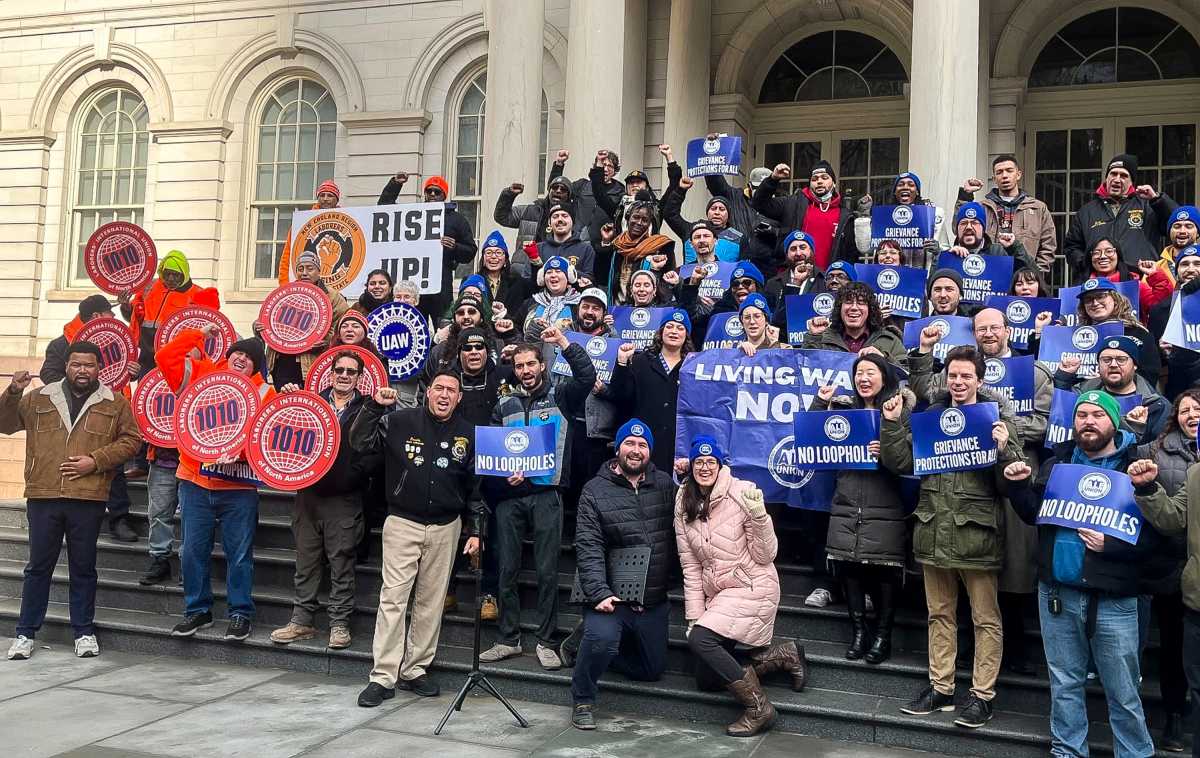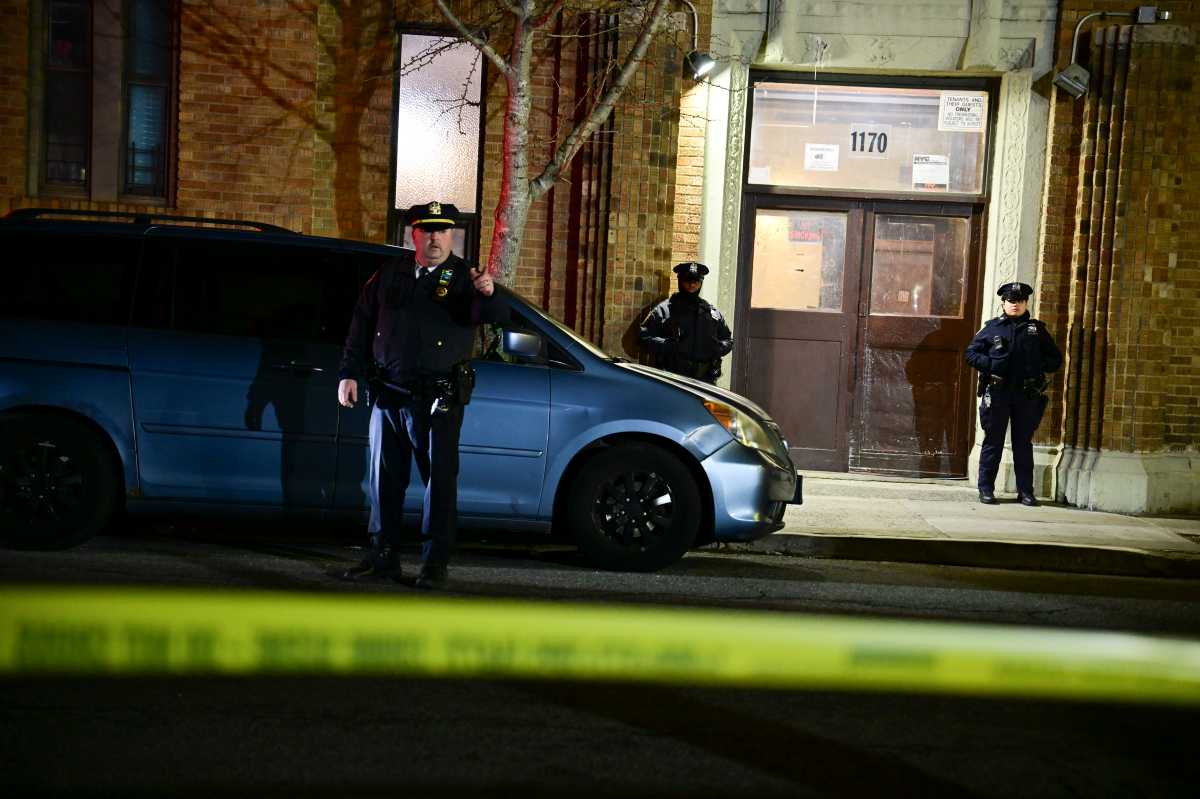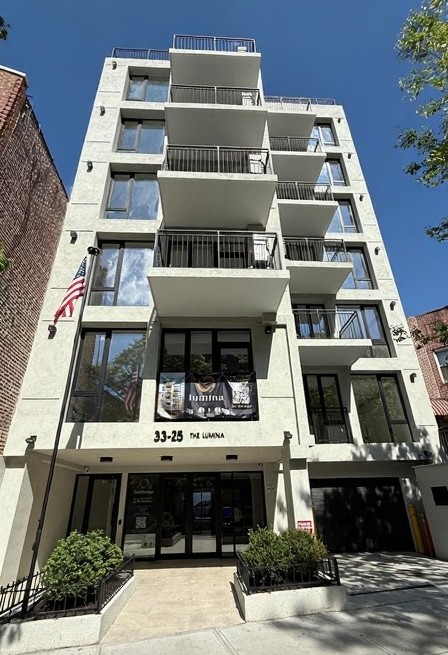City officials cut the ribbon Thursday on a new “street safety redesign” on Staten Island that many residents say has made driving and crossing a major thoroughfare “more dangerous” than ever.
NYC Department of Transportation (DOT) Commissioner Ydanis Rodriguez, along with Borough President Vito Fossella, celebrated the official redesign of Seaview Avenue in Ocean Breeze on April 10. As part of the makeover, officials eliminated one driving lane in each direction of the street, replacing both with a parking lane next to wider bike lanes.
Rodriguez said the changes will improve safety for the community and people using Northwell’s Staten Island University Hospital (SIUH), one of the borough’s largest medical facilities, which is located on Seaview Avenue.
“When we do projects like this, it is not only good for the cyclists, but it’s also good because it improves safety for everyone—for pedestrians, for cyclists and even for drivers,” the commissioner said.
Rodriguez explained that the idea to transform Seaview Avenue came out of a February 2023 community meeting in which SIUH’s president, Brahim Ardolic, MD, asked for more safety measures in the area out of concern for pedestrians.
DOT then looked at opportunities to “calm traffic” on Seaview Avenue by reducing underutilized vehicle traffic lanes while also upgrading the existing standard bike lanes on the corridor.
Vehicles must now park in the center lane, sandwiched between a driving lane and a bike lane. Other elements of the redesign include converting standard 5-foot bike lanes into parking-protected 7-foot bike lanes with an additional 5-foot buffer from the parked cars.

Outside of SIUH on Nugent Avenue, there is also a new traffic signal, crosswalk, painted pedestrian islands, and signalized pedestrian crossing.
According to DOT officials, Seaview Avenue is in the top 33.3% of people seriously injured in motor vehicle collisions on Staten Island from 2019 to 2023, with no fatalities.
Meanwhile, Ardolic maintained that the road changes will improve safety for those crossing the street.
“I want you to imagine for a second that you have a street with a hospital on one side and on the opposite side of the street you have a dialysis center, clinics and doctors’ offices,” Ardolic said. “What that means is you’ve got two groups of people crossing the street, people that can’t move very quickly and people in a big hurry.”
But Debbie, a Staten Island resident, is a patient at the dialysis center that Ardolic mentioned; she said crossing the street is now “more dangerous” than before.
“My dialysis center is across from the hospital, and there are ill people coming in and out of there six days a week,” she said. “This new way of parking is a hazard because it causes people to be dropped off in the street if there is no room on the drive up. It’s very dangerous for patients with canes and walkers.”
She added that she is very concerned about fellow dialysis patients who use canes and walkers to navigate the area.
“Dialysis patients are generally weak and have difficulty walking, especially the older ones,” she said. “It’s ridiculous.”
Supporting measures to ‘make this road safer’
Fossella, meanwhile, applauded the street’s new look at the ribbon-cutting ceremony.
“We are pleased to support measures to make this road safer. We thank NYC DOT Staten Island Borough Commissioner [Roseann] Caruana and her team for making these much-needed adjustments and Dr. Ardolic for raising these concerns.”
amNewYork spoke to other Staten Islanders in the area who said the new design is “confusing” to motorists and pedestrians. Some have even witnessed collisions and near-collisions under the new layout.
“It’s the worst idea ever,” Staten Islander Alphonse Galante said. It doesn’t make sense; it’s confusing for motorists and is quite dangerous. I live around the corner and have seen numerous accidents already.”

Martin, another Staten Islander, said his concern “lies with the ambulances” that now have to use a one-way street, cross a bike lane that they might now be able to see behind parked cars—as well as a food truck that sets up shop in or near the parking lane.
“Many cars stop at the food truck and double park, blocking the lane of traffic that an ambulance would have to use,” he said. “There is not much room to get out of the way of an ambulance behind you.”
Meanwhile, a Northwell spokesperson provided a statement to amNewYork on the redesign:
“Staten Island University Hospital, in collaboration with FDNY leadership, had worked closely with the Department of Transportation to establish designated clearances that allow traffic to safely yield for ambulances. The hospital’s priority has always been the safety of our patients, visitors, staff, and the entire community.”
The Seaview Avenue redesign follows a similar DOT redesign on Sixth Avenue in Manhattan. On March 5, the department completed the widening of a protected bike lane on the borough’s major corridor, completing a more-than-four-mile protected bike lane stretch between Greenwich Village and Central Park.
The installation of bike lanes along 6th Avenue, which originally started in 2016 between 8th and 33rd Streets, is part of the city’s ongoing Streets Plan, which includes safety and accessibility improvements for cyclists.
The revamped bike lane replaced one car lane on Sixth Avenue. It also includes intersection redesigns to enhance safety for pedestrians and travelers inside vehicles by shortening the distance it takes pedestrians to cross the street, improving visibility and naturally slowing turning vehicles to safer speeds.







































